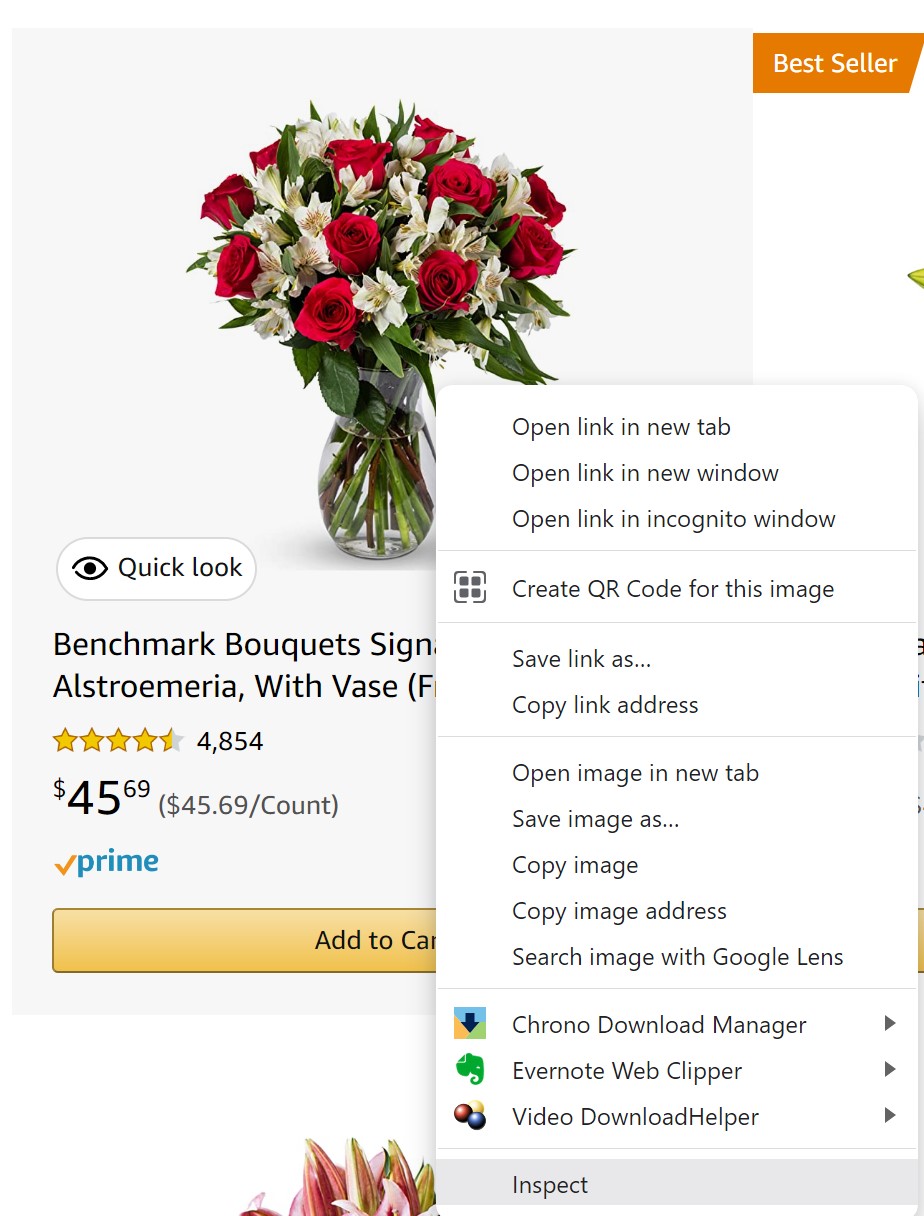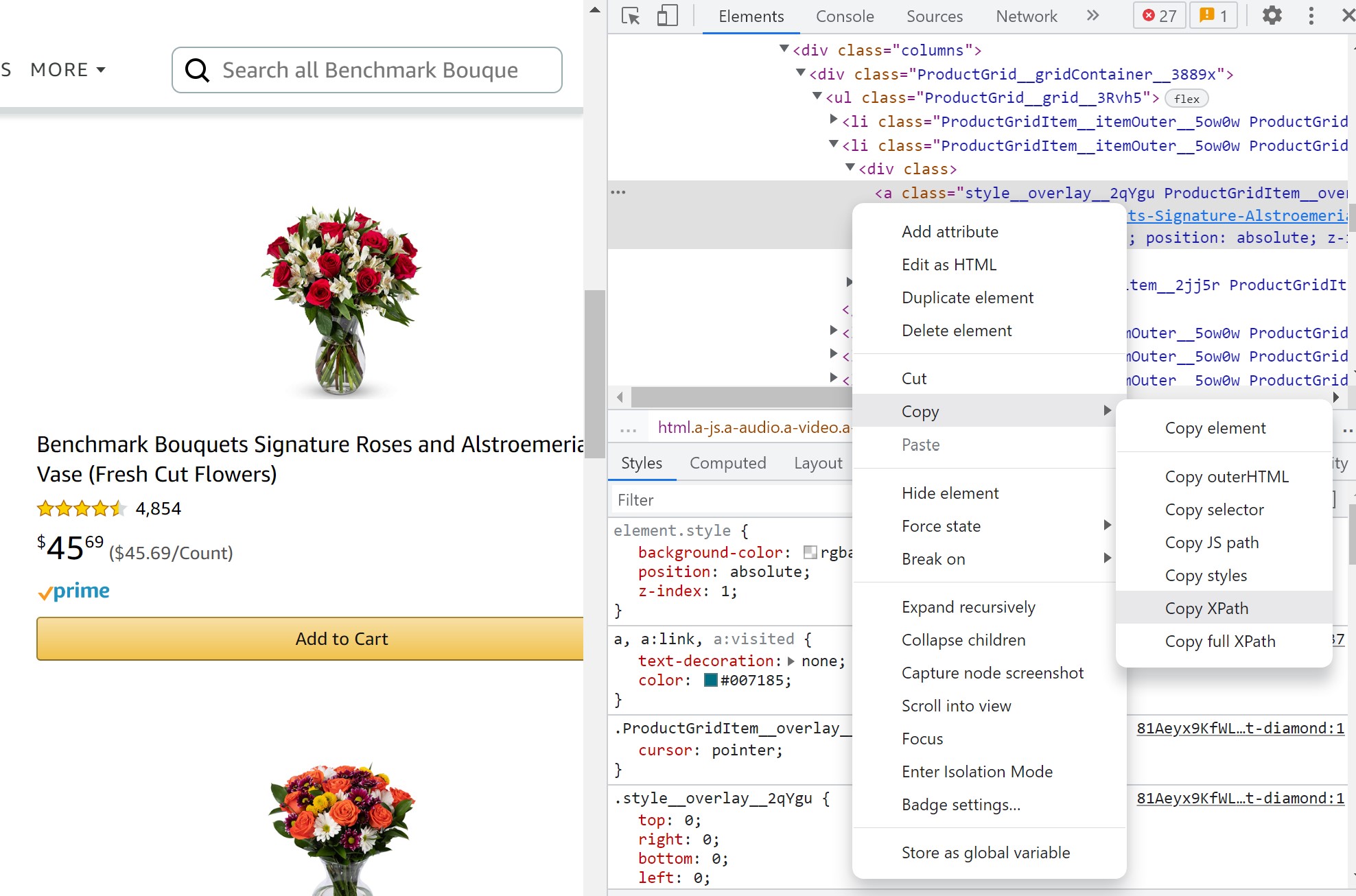Purchase Flower For Just Because Occasion. How `R` you doing it?
By Ken Koon Wong in R r just because monte carlo web scraping rvest reticulate python curl selenium chromedriver
September 4, 2022
Just Because == Randomness
Randomness can be difficult to simulate because we are biased. Not that thinking of buying your spouse 😍 flowers is a bad thing. What if you can preserve that idea and actualization by coding that! But how?

Thought Process:
- How often do you want to buy flowers for just because occasion?
- Set up randomness to that frequency of purchase
-
Scrape the flower website
- Get all flower URLs
- Randomly select one kind of flower link
- Email you with one-click URL
- Set a daily script run
1. How often do you want to buy flowers for just because occasion?
Ok, say for example, you want to buy flowers on average every 2 weeks. So that is 52 / 2 = 26. Let’s also assume that we may occasionally buy flowers for other special occasions such as Valentine’s day, Birthday, Anniversary etc.
For generosity purpose, let’s plan to buy flowers 24 times out of 365 days. Goodness me, if it is $50 per purchase, we will be spending on average $1200 per year just on flowers! Anyway, it’s for 💗 which should be priceless! 😆
FYI, this is purely for example purposes. Please do not take this as a baseline or default.
2. Set up randomness to that frequency of purchase
t <- rbinom(n = 1,size = 1,prob = 24/365)
With the above rbinom code, we are basically running a random generation of binomial distribution with the seeting n of 1 (return 1 result), size of 1 (only run 1 time), and the probability of giving a 1 is 24 times out of 365 days.
If n is set to 2, it will return a vector of 2 results.
t will be either 0 or 1. In our setting, we’re going to choose 0 as not to buy flowers, and 1 as to buy flowers.
3. Scrape the flower website
library(tidyverse)
library(rvest)
library(reticulate)
if (t==1) {
# amazon website of the flower store, you can choose any store, really
af <- "https://www.amazon.com/stores/Benchmark+Bouquets/page/42547BCC-0B74-4473-BA15-5AA10EB16169?ref_=ast_bln"
# import selenium from python
# py_install("selenium"), #uncomment this if you have not installed selenium
sel <- import("selenium")
# import webdriver
driver <- sel$webdriver
# Set chrome options
chrome_options <- sel$webdriver$ChromeOptions()
chrome_options$add_argument('--headless')
chrome_options$add_argument('--no-sandbox')
# For windows you may have to do the following
# chromedriver path
# path <- "" #insert your chromedriver path, if you have not downladed, go to https://chromedriver.chromium.org/downloads and select the version compatible to your chrome
# browse <- driver$Chrome(executable_path = path,options=chrome_options)
# set up browser, see above if this does not work
browse <- driver$Chrome(options=chrome_options)
# Go to af URL
browse$get(af)
Sys.sleep(3)
# Download the whole HTML code of the site
html <- browse$execute_script("return document.documentElement.outerHTML")
# Use rvest to scrape xpath
flower <- read_html(html) %>%
html_nodes(xpath = "//*/div/div/div/div/ul/li/div[1]/a/@href") %>% # see comment 3.1
html_text()
# Close your browser
browse$close()
# create the body of message to send via email
message <- paste("Subject: Flower\r\n\r\n",paste0(
"Time to buy some flowers, Ken!
Thanks for keeping the family floral and happy ! :) ",
"https://www.amazon.com",sample(flower,1)), # see comment 3.2
collapse = "\r\n")
} else {
# if t is not 1 then, message will be assigned this value
message <- paste("Subject: Flower\r\n\r\n",paste0("none for today"),
collapse = "\r\n")
}
The codes are pretty self-explanatory.
- if
tis 1, remember thetfrom rbinom? Then:- visit the website
- get the whole html
- comment 3.1:
- look for the URL to one of the flower links
- right click on it and click on
inspect
- then right click on the highlighted
divsection and selectcopyand thencopy XPath
- which you should see something like
//*[@id="ProductGrid-PMiOmKO"]/div/div/div/div/ul/li[2]/div[1]/a - if you scroll back up to the code above the xpath used was
//*/div/div/div/div/ul/li/div[1]/a/@href, the only differences areno idandliwas without number, which gives us all of the different flower URLs - Tips: I generally will copy and paste 2 xpaths of interest and compare it side by side and then change the xpath accordingly to recognize all the URL I want. Also added
@hrefto return the URL
- comment 3.2: Sampling 1 of the many flower URLs scraped
- create a generic body of email message
- if
tis 0, then create a different generic body of email message
4. Email you with one-click URL
library(curl)
# you actually need a gmail account for this
from <- Sys.getenv("auto_email")
to <- "timetogetyourspouseflower@automation.io" # please change to your email, this is just for kicks
# using for loop in case it goes to more than 1 email account
for (i in to) {
send_mail(mail_from = from,mail_rcpt = i, smtp_server = "smtps://smtp.gmail.com:465", message = message,verbose = TRUE, username = Sys.getenv("auto_email_user"), password = Sys.getenv("auto_email_pass"))
# setting 15 seconds because gmail uses 15 seconds to be able to send another email, i believe
Sys.sleep(15)
}
Again, rather self-explanatory code we have above. It uses package curl to send a simple message which looks like this.
Tips: you need to set up
Google App Password in order to get the password which I have saved in my .Renviron.
See this for further reading on saving and retrieving your password in .Renviron, go to section Environment Vairable

5. Set a daily script run
# I use Raspberry pi, on terminal, run this
crontab -e # comment 5.1
# add this to the script
15 9 * * * sudo Rscript /path/to/your/Rscript # comment 5.2
- comment 5.1: if you have never used crontab in bash before, check the manual out
- comment 5.2:
15 9 * * *means everyday at 9.15am, run this code - Tips: Of course this is in Raspberry Pi, which uses Debian as OS. If you are windows user, please check out Tasks Scheduler
Phewww… That’s a lot of code

We can finally high-five ourselves! Pat your past, present and future self on the back because we have created a system that reminds us to be grateful to our spouse.
Conclusion/Lessons Learnt:
Randpythondo work well together throughreticulate- Learn probability theory through real life
- I realized that I don’t always get a link every 2 weeks, sometimes I receive links back to back for several days!
- There are ways to remind ourselves to be grateful. Why not use technology for this!
This algorithm/coding is dedicated to my wife Naomi Tyree. Always so supportive, caring, and sometimes, just because ❤️
- Posted on:
- September 4, 2022
- Length:
- 5 minute read, 1045 words
- Categories:
- R r just because monte carlo web scraping rvest reticulate python curl selenium chromedriver